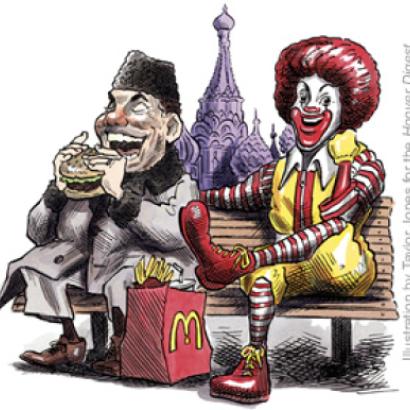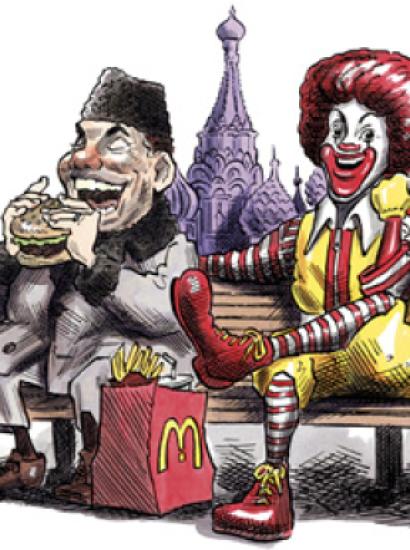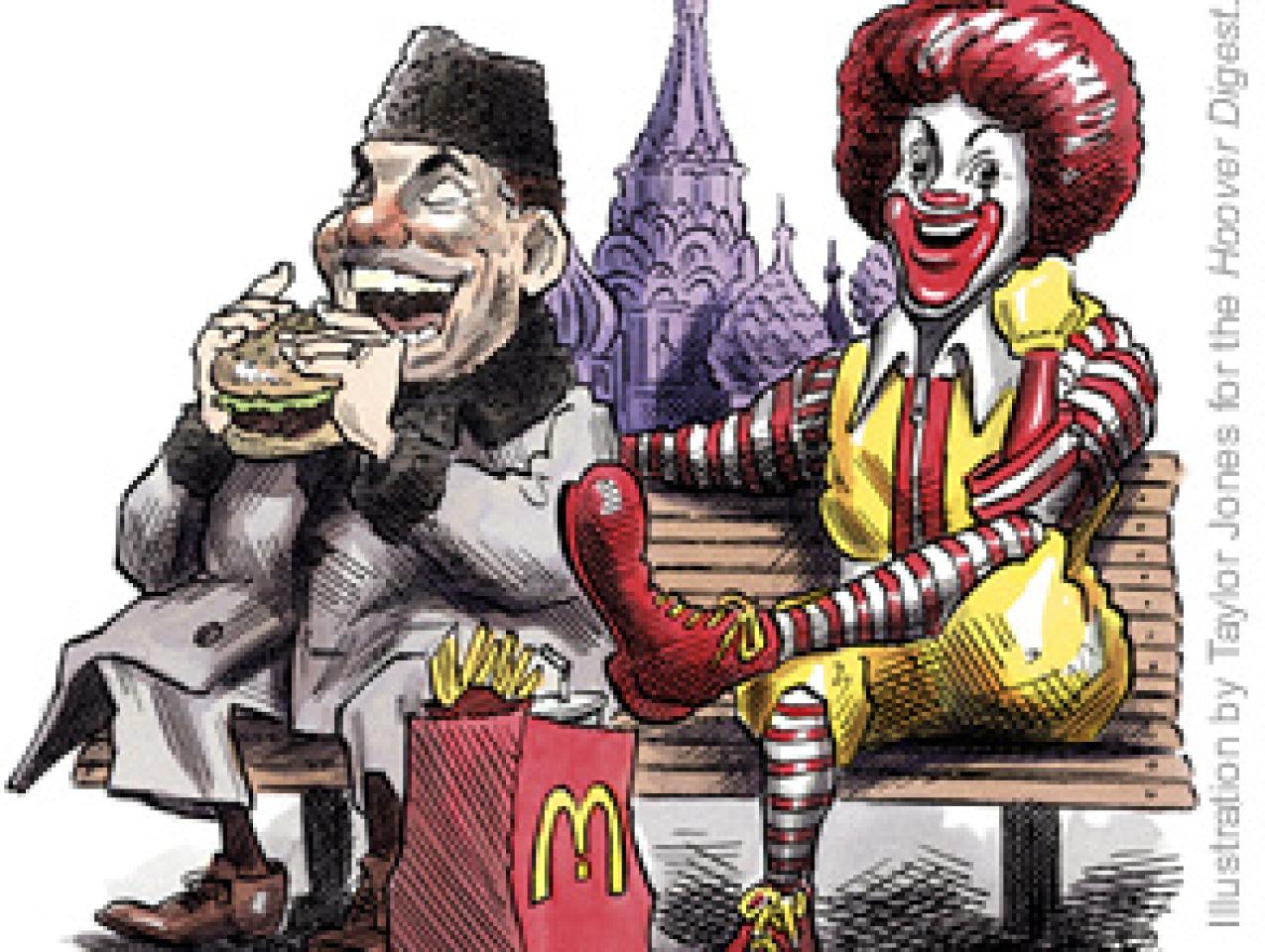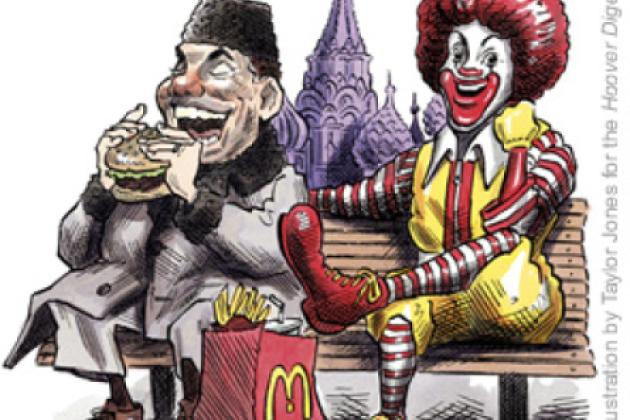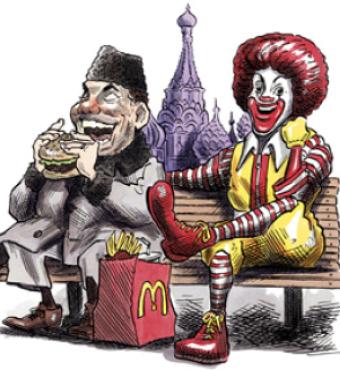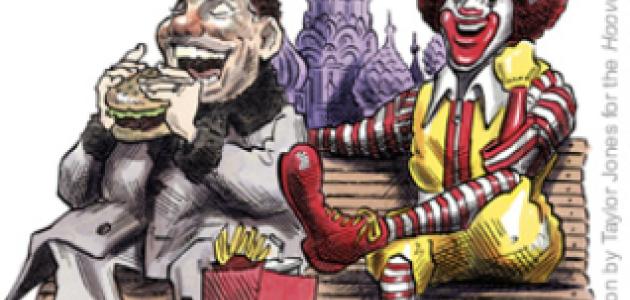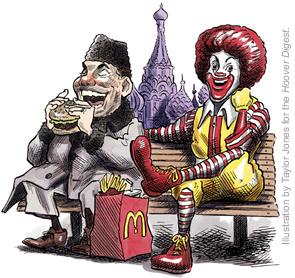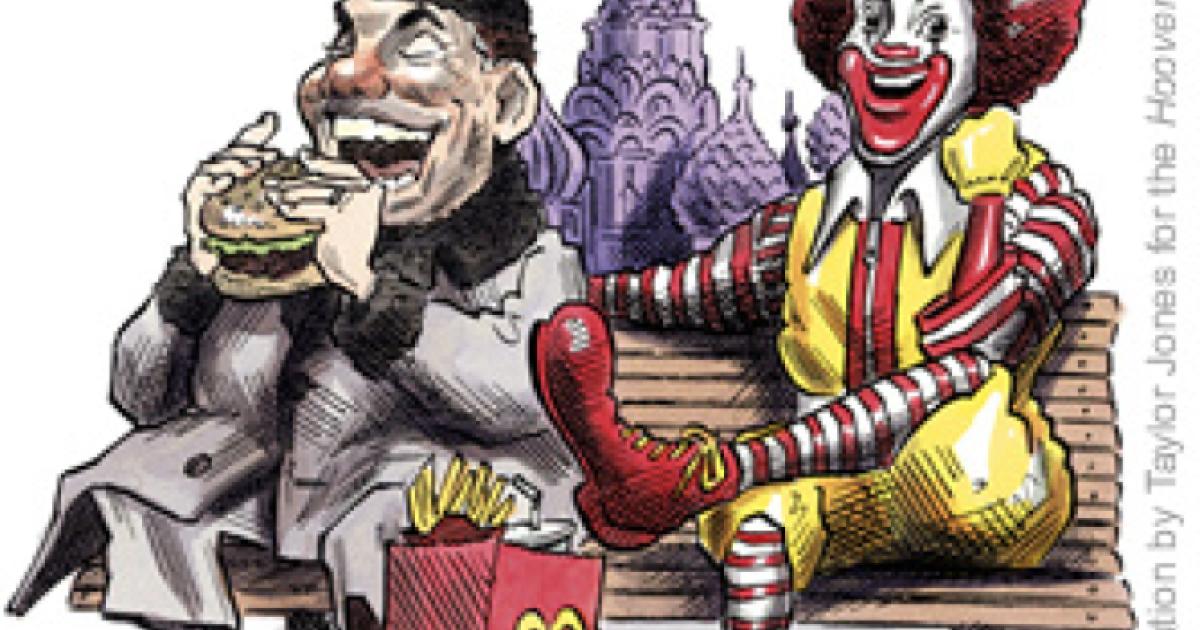- Economics
- Law & Policy
- Civil Rights & Race
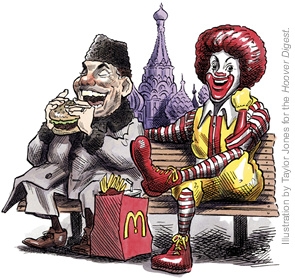
McDonald’s is celebrating its fifteenth anniversary in Russia. Its sales have risen steadily, reaching $310 million in 2004. The company reports that it is serving more than 200,000 customers daily in more than a hundred Russian locations. Well, three cheers for McDonald’s, but what’s the big deal?
Why is McDonald’s such a success when all they’re selling is a Russian staple, a kotlety, as they call it? It was once a puzzle to me, but there’s a story behind this McDonald’s success story.
Some years ago I was staying at one of Moscow’s most luxurious hotels, just built by private German investors, called the Mezhdunarodnaya (International). A beautiful lobby, sumptuous furnishings, and, for the interested, lovely ladies circulating about. And high above the lobby was some kind of huge cuckoo clock that yapped out the time while little dummy creatures marched round and round and then shut themselves down.
I was a member of a group tour organized by the World Media Association to interview leading Soviet political personalities. We were asked to take our lunches in the hotel dining room, where one could conduct private conversations without concern that you would be overheard because the tables were suitably separated. You didn’t order lunch. It was a fixed menu, dish after dish, five courses—soup, main course, salad, dessert, and beverage.
Another member of our group was the distinguished scholar of Russian history Richard Pipes, at present a Harvard professor emeritus. Although Professor Pipes is a somewhat relaxed observer of the Jewish laws of kashruth, he does not eat pork. So when the waiter plopped down—literally—two plates with gray-looking meat slabs, Pipes inquired of the waiter, in Russian: “What meat is this?”
“Ya niznayu” (I don’t know), snapped the waiter with a shrug and walked off. Fast-forward to 1991. I am in a taxicab heading to downtown Moscow with a Russian friend. We pass one of the first McDonald’s outlets, and there’s a line around the block. And so I ask my Russian friend, Why is there such a line for McDonald’s when all that’s being served is the kotlety?
He explained: First, no tipping. Second, service is almost instantaneous. Third, it’s American, so the hamburgers can be trusted. Fourth, terrific french fries.
But the most important reason was the fifth. When the customer forked over his rubles, the cashier said, and with a smile, Spasibo (Thank you). There was no tossing the food at the customer as was the case at the fancy-schmancy Hotel Mezhdunarodnaya. Courteous service was something unheard of in the Soviet days and during the perestroika transition to capitalism.
Today Russia is McDonald’s fifth-most profitable market in Europe after Britain, France, Germany, and Spain. The company now employs 17,000 people in Russia and operates 127 restaurants in 37 cities west of the Urals.
The first McDonald’s opened in Moscow’s Pushkin Square in 1990. A record 30,000 people lined up for blocks to get in on its first day of business. And all that was being sold, at a price almost equivalent to a day’s wages, was a kotlety. But ah, the french fries. Or as they call them in Russian, kartofel fri, served with a smile.








